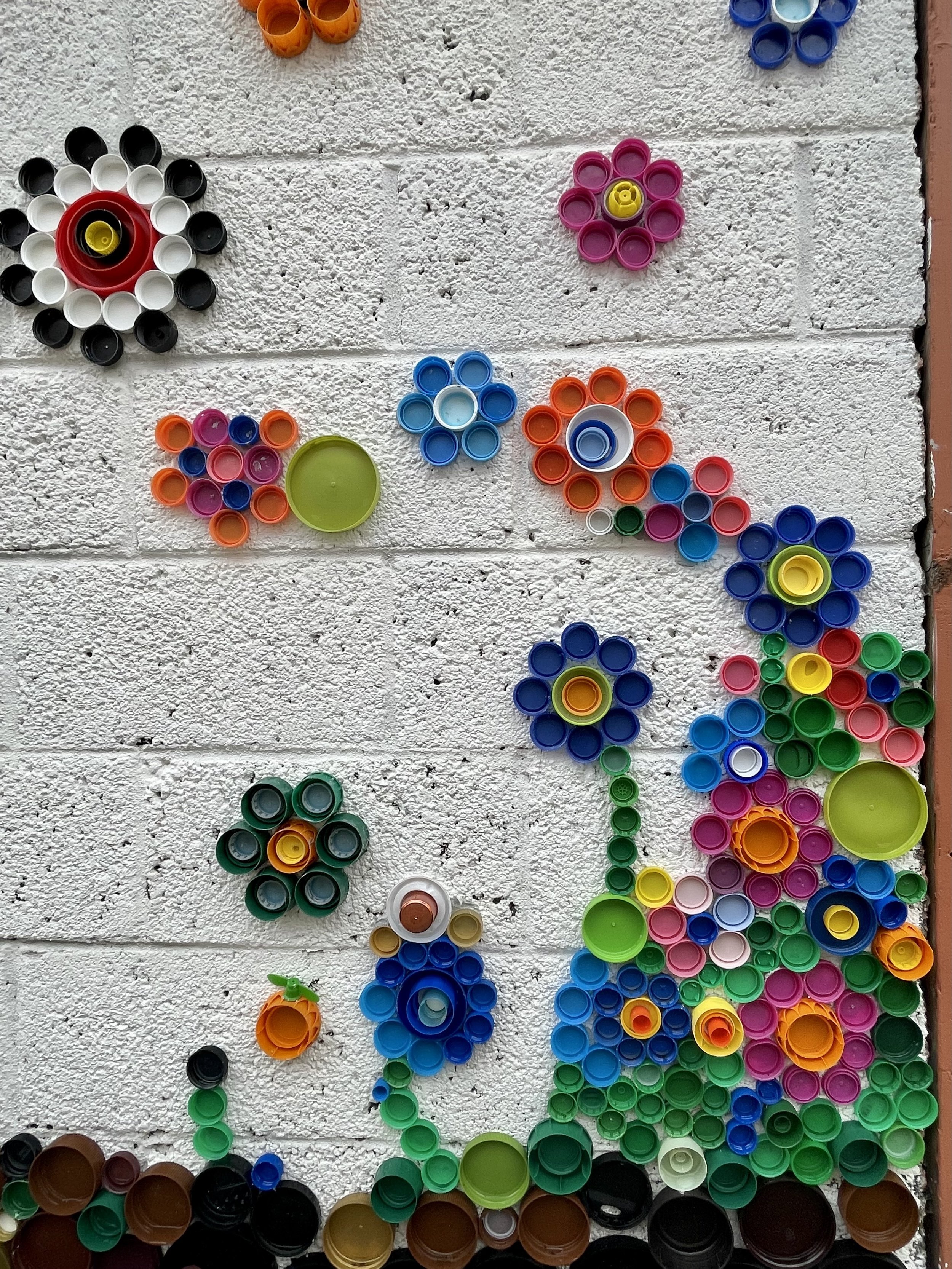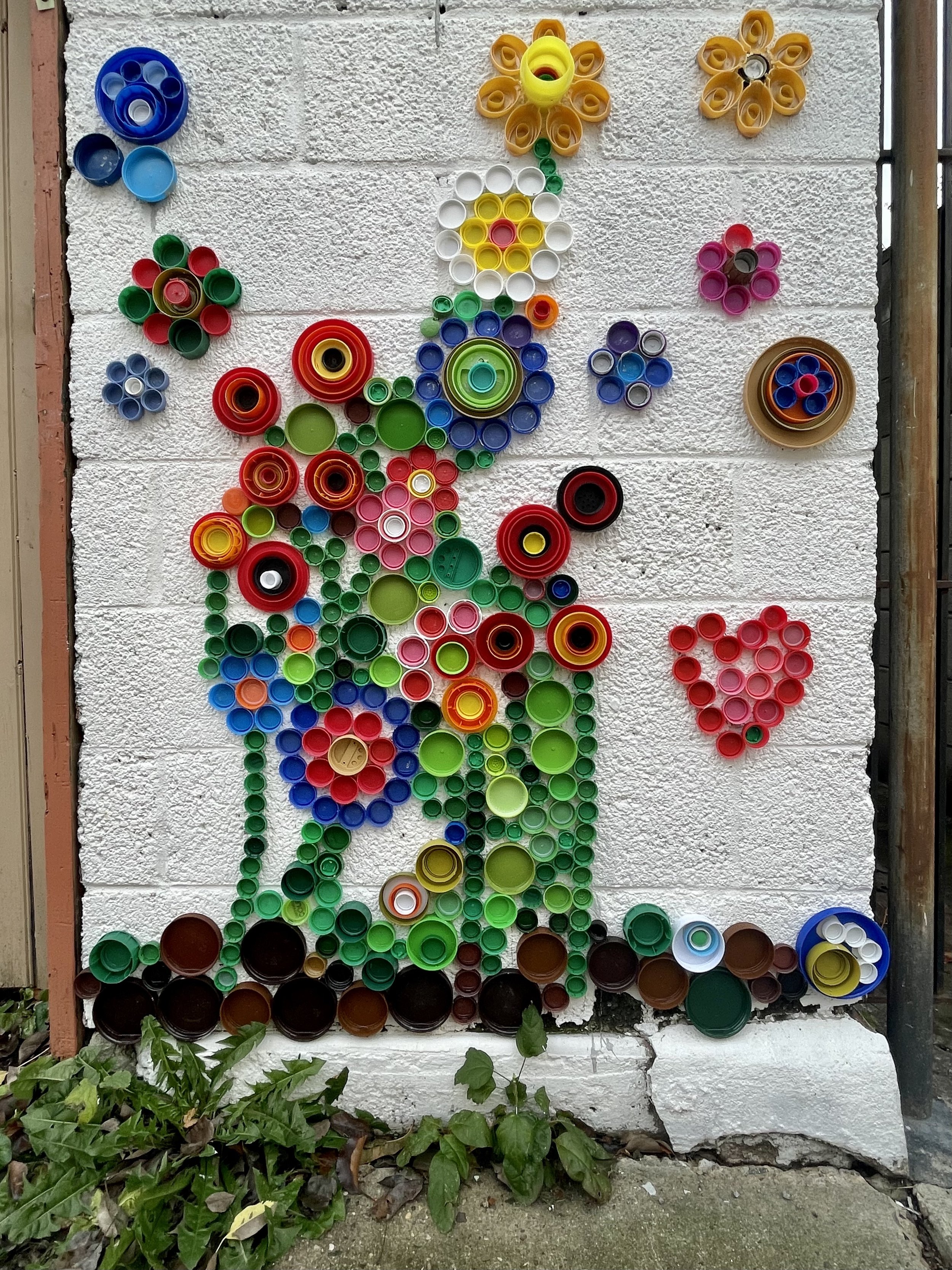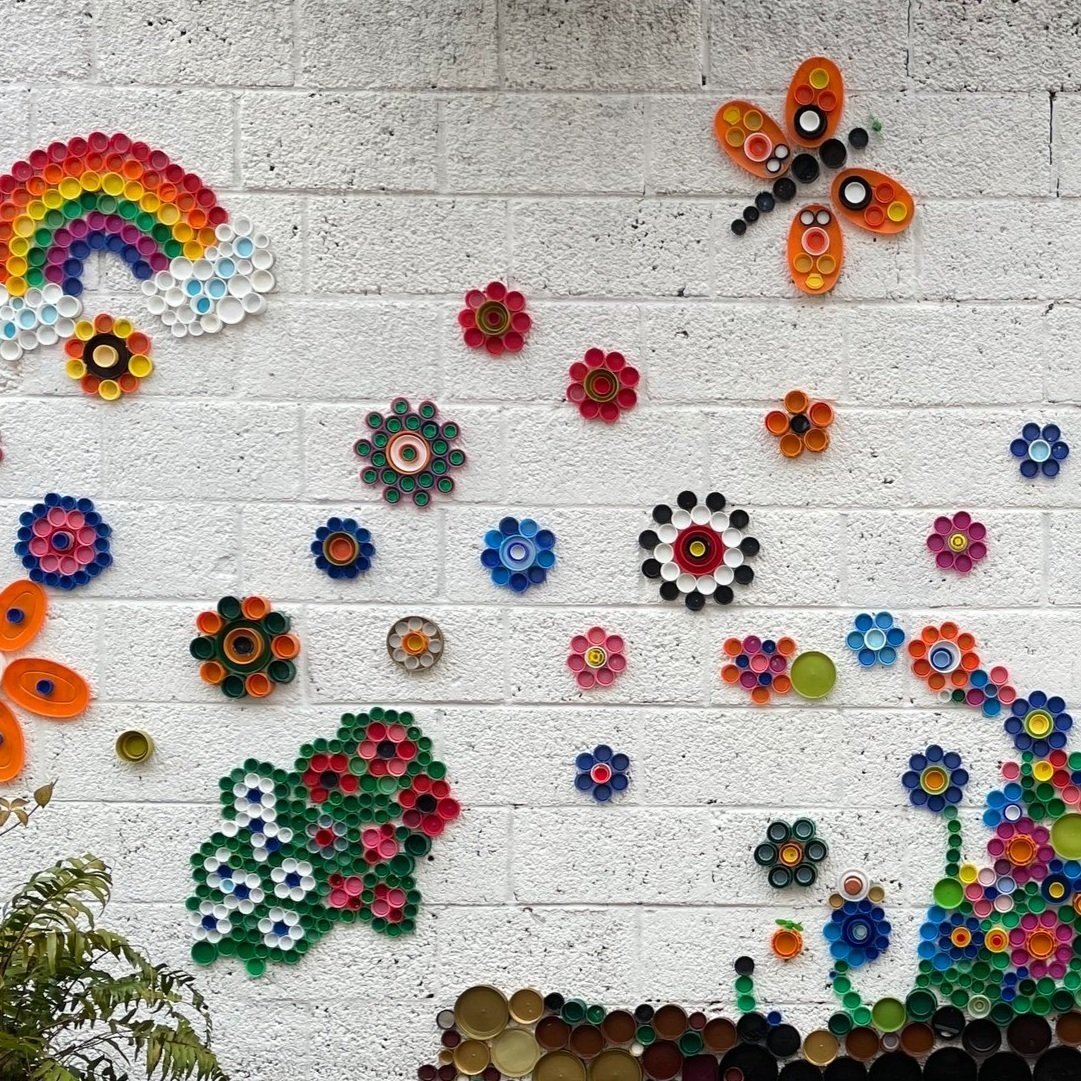Colleen Hammond activates her neighborhood through a sustainable art project
Sustainability has become a central topic of conversation as landfills grow and temperatures rise. The art world, DVAA included, is joining the conversation. Whether it be through exhibitions that encourage discussions on sustainability, like To a Green Thought in a Green Shade or through artwork assembled from recycled and post-consumer materials like Palumbo Park installation Deconstructed Landscapes. Our community sees the writing on the wall, and understands the importance of exploring sustainability within their work.
Art and Sustainability meet again in the DVAA community through a neighborhood mural made solely from bottle-caps. Bottle-caps that otherwise would have ended up in a landfill. Artists member Colleen Hammond is responsible for this wonderful project, and I was able to connect with her to ask a few questions. Keep reading to hear from Colleen!
-Ronnie
P.S. if any DVAA members have yellow or purple bottle caps, Colleen is in the market ;)
DVAA: Could you tell us a little about your neighborhood bottle cap mural? What inspired this project?
Colleen Hammond (CH): Searching and sifting through Pinterest is an enjoyable pastime for me. This is where I found many bottle cap projects assembled by schools and throughout communities. There are a fair number of kids on our block and I thought it would be a great project to do with them as well as beautify this empty cinder block wall across the street. An older gentleman we've come to know owns the property and so I asked his permission to do the mural. His quick response was "knock yourself out". So I printed out flyers describing the idea and asked neighbors what they thought of the idea and what they would like to see on the wall. I asked for drawings but didn't get many back. Flowers and lots of color was the final proposal. One very touching request came from a neighbor who asked if we could add a butterfly on the wall in honor of her daughter she had lost the previous year. Without question it was added to the design. First I did some research to find out how I might go about attaching plastic onto concrete and ended up purchasing a construction adhesive. The bottle cap murals I had found online were all screwed onto wood panels. To make sure it would work I attached a test flower onto the wall for four seasons and was thrilled to find it withstood the elements. That whole year that one flower caught every passerbys attention. It was fun to glance out my front window to see a mom with their child stop and point and touch it. I added a second and that really intrigued and mystified many of the kids that walked by. One day I heard a child shout out to his parents, look there's another one! So funny.
DVAA: How did working collaboratively on a creative project affect your neighborhood? Tell us about the process of designing the mural. Was it an intuitive process? Or did you plan it out beforehand?
CH: Once I knew it would work I asked neighbors to start collecting plastic bottle caps. A neighbor that moved but that kept in touch, brought me a big box of caps. She is an art teacher and had them from a previous classroom project. A knock on the door usually meant a bag of caps were being dropped off. Another year of collecting caps pursued. One neighbor helped out by separating all the colors which I then grouped by size. On my studio floor I layed out different designs for flowers and butterflies and took pictures so I could print them out for reference. Some I actually bagged like a kit for the younger kids. Google Images provided other ideas and patterns to follow. That's as far as the planning went and the rest was intuitive. Having everyone come up with their own ideas and creations was a joy to watch and gave everyone a sense of ownership.
On my studio floor I layed out different designs for flowers and butterflies and took pictures so I could print them out for reference. Some I actually bagged like a kit for the younger kids. Google Images provided other ideas and patterns to follow. That's as far as the planning went and the rest was intuitive. Having everyone come up with their own ideas and creations was a joy to watch and gave everyone a sense of ownership. On days that were clear and the weather was fair I would lay out a drop cloth, set up a table and bring out the sorted caps, pictures, kits, and two caulk guns to apply the adhesive. One by one a neighbor or two would join in. For the littlest ones I provided small cups and craft sticks to apply the adhesive.
One day two adorable little latina girls from around the corner asked to join me. The youngest, though she did not speak to me, understood every explanation and suggestion I made. I forget how she communicated it to me but she wanted to make a heart. I drew the outline on the wall and she filled it in. The mother came by to check on things and though little words were exchanged the smiles and nods were enough to make known everyone was safe, welcome and having fun. I did experience something I never had before. I asked a young latina boy what his mother's name was and he said he was not allowed to tell me. I assured him that I respected his mother's wishes and to tell her that she and her family would always be welcome to participate. As people walked by there were always shared smiles and compliments as we worked. Neighbors would stop me and tell me how much they enjoy seeing all the color and that it makes them happy. Strangers as well would stop out of curiosity and conversation would ensue.
DVAA: Is this your first time working on a sustainable art project? If so, is it something you might want to continue exploring?
CH: This is my first time working on a sustainable art project. Though I have no immediate plans to do another I would not disregard the possibility. In fact, behind this wall is what I call a "secret garden" and have discussed with the owner, (John) the idea of cleaning it up and doing some planting. I think I persuaded him to agree when I suggested setting up a bistro table and chairs and that I'd join him with a cup of coffee.
DVAA: Do you have an estimate of how many bottle caps you have saved from landfills?
CH: Oh my goodness, I have no idea how many bottle caps. I have gone through most that were collected and we are starting to collect more. We filled 4 large bins and I am sure we will need at least 4 more full bins worth. Hmmm, another project for the kids - count all the caps! By the way, yellow and purple caps are quite difficult to find so if anyone at DVAA should come by any please save them for us. Thanks!





